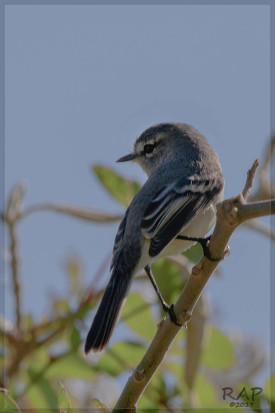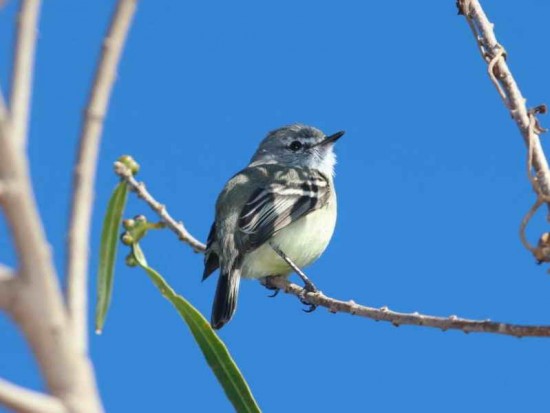Formerly White-bellied Tyrannulet
Order: Passeriformes (Suboscines) - Family: Tyrannidae
Status: Winter visitort. Habitat: Woods and bushland
| Winter visitor. It is very similar to the White-crested Tyrannulet Serpophaga subcristataa, an all year round bird. A slight difference in size -the white-crested is one cm longer on average- and the crown of the Straneck's Tyrannulet has not or has less white than that of the White-crested Tyrannulet. These differences are difficult enough to evaluate with a naked eye, which demands identification through song. |
| All records since January 2014 |
|---|
| Sounds | |||
|---|---|---|---|
|
© Diego Caiafa |
|||
| Adult |
|---|
 © RAP © RAP © RAP © RAP |
| More photographic records since January 2013 |
|---|



